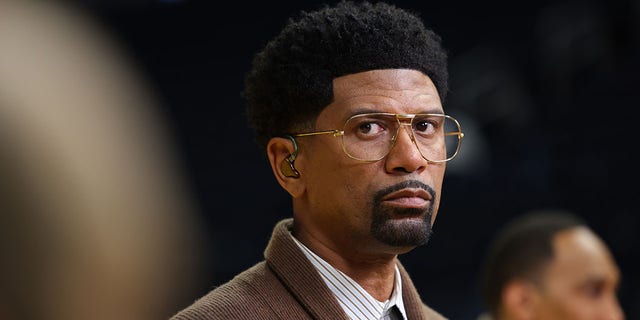‘Mount Rushmore’ term is ‘offensive’ and should be ‘retired,’ ESPN’s Jalen Rose says
ESPN’s Jalen Rose is challenging people to stop using the term “Mount Rushmore.”
The term is normally used when naming the four greatest in a certain category.
The term derives from Mount Rushmore National Memorial, built on Mount Rushmore in South Dakota, which depicts former presidents George Washington, Thomas Jefferson, Theodore Roosevelt and Abraham Lincoln.
Rose wants to cancel the term because the monument was built “on top of dead bodies” of Native Americans whose land was taken from them.
“Can we retire using ‘Mount Rushmore?’ That should be offensive to all of us, especially Native Americans, Indigenous people who were the first people here before Christopher Columbus,” Rose said in a video he tweeted. “That land was stolen from them when it was discovered that it contained gold.
“And 25 years later, to add insult to injury, four American presidents were put on what we call Mount Rushmore on the top of the dead bodies that is buried right underneath. So, I call for you and for myself — I’m owning this, too — let’s stop using the term ‘Mount Rushmore’ when we’re talking about our favorite rappers, talking about our favorite movies, talking about our favorite players.”
Rose compared the term to two former names of sports franchises considered offensive.
JALEN ROSE APOLOGIZES TO ‘THE GAME’ AFTER ‘TOKENISM’ REMARK, STILL DOESN’T BELIEVE KEVIN LOVE SHOULD MAKE TEAM
“Why do you think Washington changed their name from Redskins? I do a show and didn’t say that word for eight years,” he said. “Because it’s offensive. What about the Cleveland Indians? Same thing. Why did they change the name? Because it’s offensive.”
Washington dumped the name before the start of the 2020 season and went by the “Football Team” for two seasons before becoming the Commanders this offseason. Cleveland’s baseball team dropped its nickname after last season and became the “Guardians.”

CNN has been critical of Mount Rushmore, calling it a “monument of two slaveowners.” The memorial was built in 1927 and was added to the U.S. National Register of Historic Places Oct. 15, 1966.
Read the full article Here


